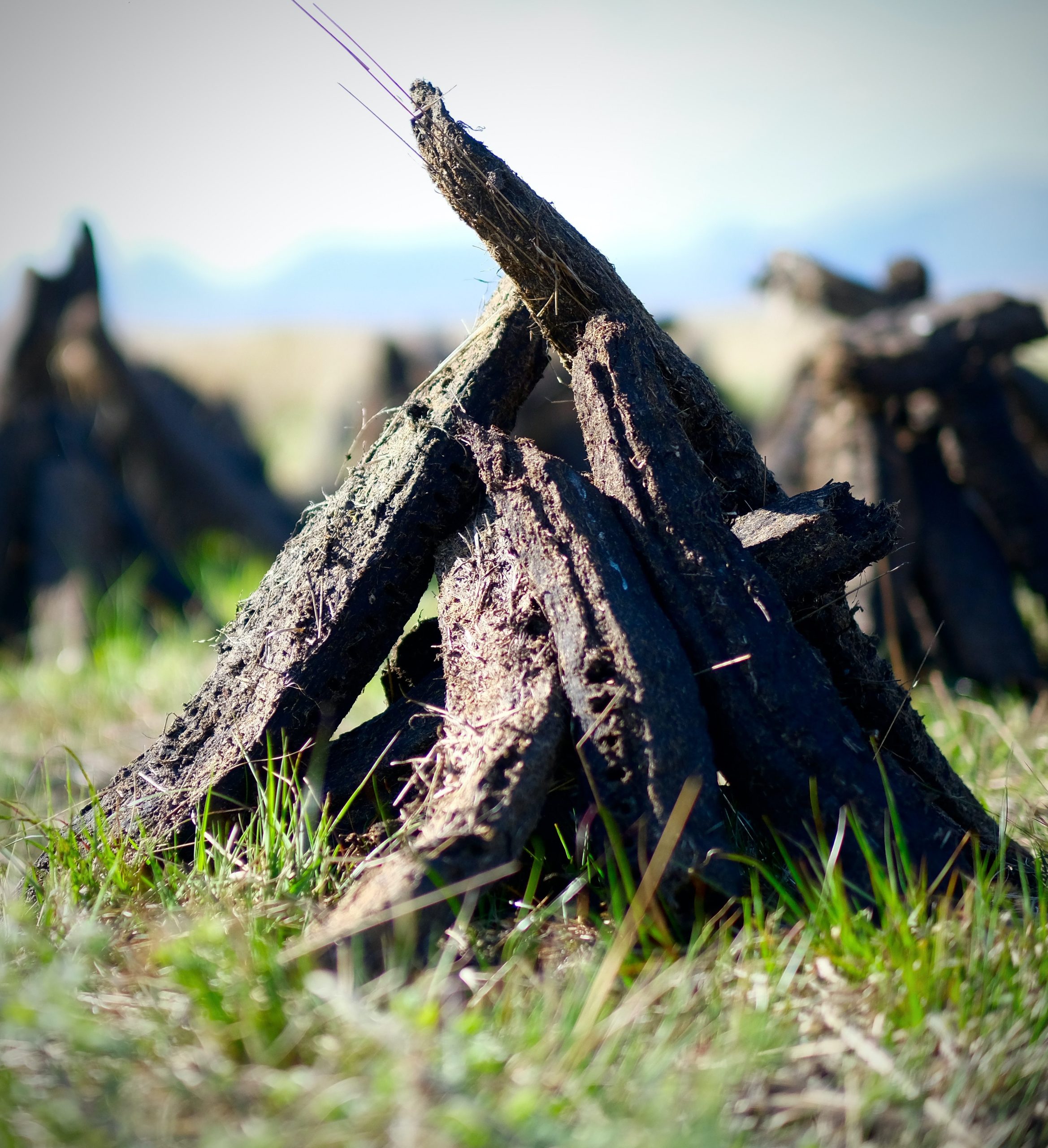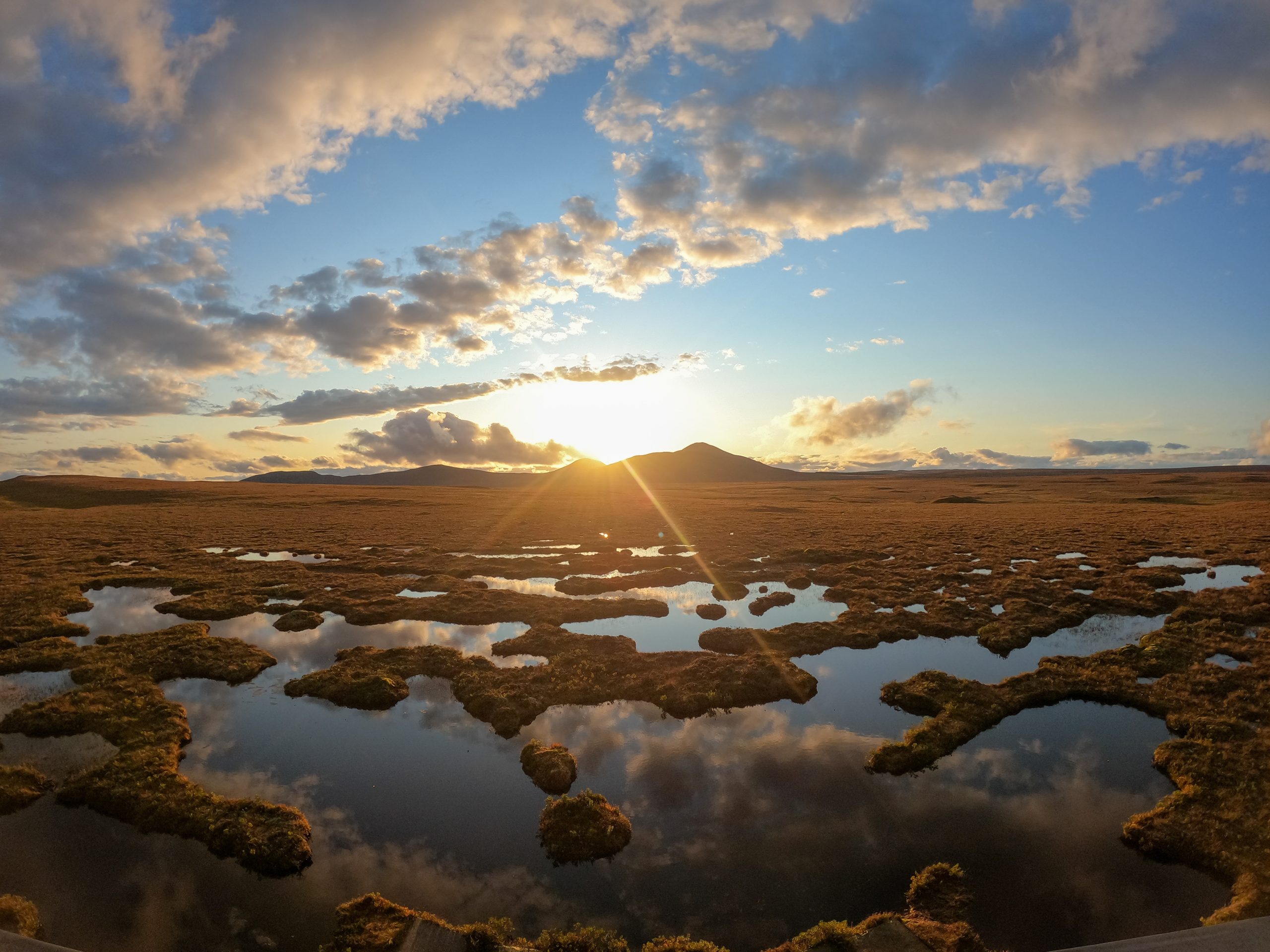Our market expert, Roelof, says:
Have you ever had the pleasure of being able to jump on a peat bog? Soft, springy ground that sinks and moves up and down on the water, as if you’re standing on a kind of giant raft made of plants. It immediately illustrates the uniqueness of this type of landscape: it consists of plant remnants. You don’t realize how strange it actually is to walk on plant remnants without a layer of sand or clay underneath until you walk on real peat bog. The first time I walked through the Bargerveen peat bog, a Dutch nature area, I was amazed by the diversity and beauty of the area. Unfortunately, not only in the Netherlands but also elsewhere in the world, we have fewer and fewer peat landscapes.
Humans are not good at preserving a resource. Peat is not well-suited for building structures upon. It is not suitable for agriculture due to its acidic environment. However, you can extract peat to make “soil improver” or products like activated carbon. So, it’s not entirely incomprehensible that large amounts of peat were excavated in the past, and this still continues to this day. However, the costs of excavating peat are often much greater than what is gained from it.

Peat services
Although I consider the intrinsic value of such a unique system reason enough for protection, policymakers often need something more. That something more, in this case, is the ecosystem services that the peatland provides passively. And the view of peat as an easily extractable resource for quick profit starts to look very different when you take these services into consideration. In many countries dealing with irregular amounts of precipitation followed by drought, peat can play an important role in water management. Heavy rains require that the drainage in a country is set up so that everything can drain water as quickly as possible, which leads to water shortages in dry periods. Peat can function like a sponge, absorbing water in times of heavy rain and acting as a buffer storage of water in dry periods.
In addition to water management, climate is also an important theme. The fact that peat can burn can be inferred from the historical use of peat as a cheap fuel. If you’ve ever experienced the so-called ‘haze’ season in Southeast Asia, you’re also familiar with the effects of peat burning: in 2019, 2 gigatons of carbon dioxide were released into the air from peat stored under the tropical rainforest as a result of forest fires. In short, peat stores a lot, a whole lot of carbon in the form of organic material. These gases are not only released during combustion; when peat is drained, it can also oxidize and release CO2 and N2O, two potent greenhouse gases.
The release of gases has another negative effect: subsidence. Not only does the ground literally sink, but this can also lead to flooding and other issues near bodies of water or coastal areas.
Lastly, there’s also biodiversity. Many species are almost exclusively found in peat areas and are fully adapted to the unique environment that arises within a peat area. It’s important to maintain this habitat to preserve these species.
Plantbased
Fortunately, there are several developments happening in the field of peatlands. We have protected nature areas that consist of peatlands. There are several ongoing studies regarding the proper use of peat, preventing subsidence, and the degradation processes that occur within peat. There is also attention within Europe for the preservation of peat areas through initiatives like LIFE and the habitat directive. What about us though? It’s also something to think about when you add soil improver to your garden or land: where does it actually come from? While it may be plant-based, it’s probably not very kind to the plants themselves.
Roelof Zwaan
Market expert

Our market expert, Roelof, says:
Have you ever had the pleasure of being able to jump on a peat bog? Soft, springy ground that sinks and moves up and down on the water, as if you’re standing on a kind of giant raft made of plants. It immediately illustrates the uniqueness of this type of landscape: it consists of plant remnants. You don’t realize how strange it actually is to walk on plant remnants without a layer of sand or clay underneath until you walk on real peat bog. The first time I walked through the Bargerveen peat bog, a Dutch nature area, I was amazed by the diversity and beauty of the area. Unfortunately, not only in the Netherlands but also elsewhere in the world, we have fewer and fewer peat landscapes.
Humans are not good at preserving a resource. Peat is not well-suited for building structures upon. It is not suitable for agriculture due to its acidic environment. However, you can extract peat to make “soil improver” or products like activated carbon. So, it’s not entirely incomprehensible that large amounts of peat were excavated in the past, and this still continues to this day. However, the costs of excavating peat are often much greater than what is gained from it.

Peat services
Although I consider the intrinsic value of such a unique system reason enough for protection, policymakers often need something more. That something more, in this case, is the ecosystem services that the peatland provides passively. And the view of peat as an easily extractable resource for quick profit starts to look very different when you take these services into consideration. In many countries dealing with irregular amounts of precipitation followed by drought, peat can play an important role in water management. Heavy rains require that the drainage in a country is set up so that everything can drain water as quickly as possible, which leads to water shortages in dry periods. Peat can function like a sponge, absorbing water in times of heavy rain and acting as a buffer storage of water in dry periods.
In addition to water management, climate is also an important theme. The fact that peat can burn can be inferred from the historical use of peat as a cheap fuel. If you’ve ever experienced the so-called ‘haze’ season in Southeast Asia, you’re also familiar with the effects of peat burning: in 2019, 2 gigatons of carbon dioxide were released into the air from peat stored under the tropical rainforest as a result of forest fires. In short, peat stores a lot, a whole lot of carbon in the form of organic material. These gases are not only released during combustion; when peat is drained, it can also oxidize and release CO2 and N2O, two potent greenhouse gases.
The release of gases has another negative effect: subsidence. Not only does the ground literally sink, but this can also lead to flooding and other issues near bodies of water or coastal areas.
Lastly, there’s also biodiversity. Many species are almost exclusively found in peat areas and are fully adapted to the unique environment that arises within a peat area. It’s important to maintain this habitat to preserve these species.
Plantbased
Fortunately, there are several developments happening in the field of peatlands. We have protected nature areas that consist of peatlands. There are several ongoing studies regarding the proper use of peat, preventing subsidence, and the degradation processes that occur within peat. There is also attention within Europe for the preservation of peat areas through initiatives like LIFE and the habitat directive. What about us though? It’s also something to think about when you add soil improver to your garden or land: where does it actually come from? While it may be plant-based, it’s probably not very kind to the plants themselves.
Roelof Zwaan
Market expert



